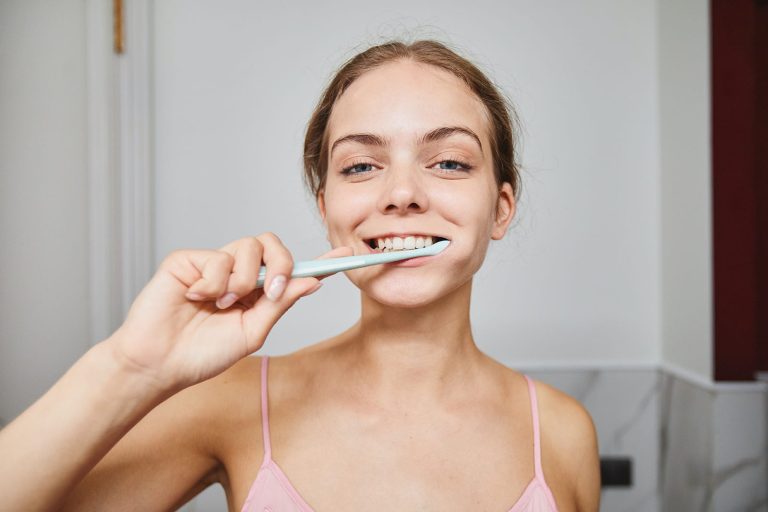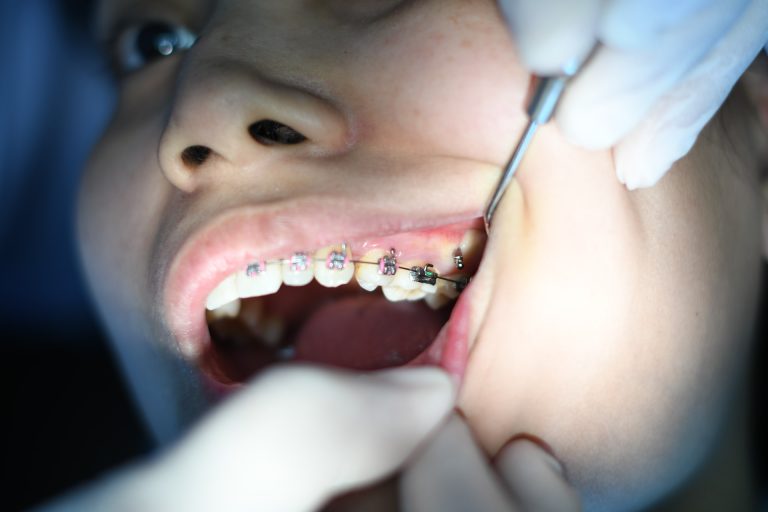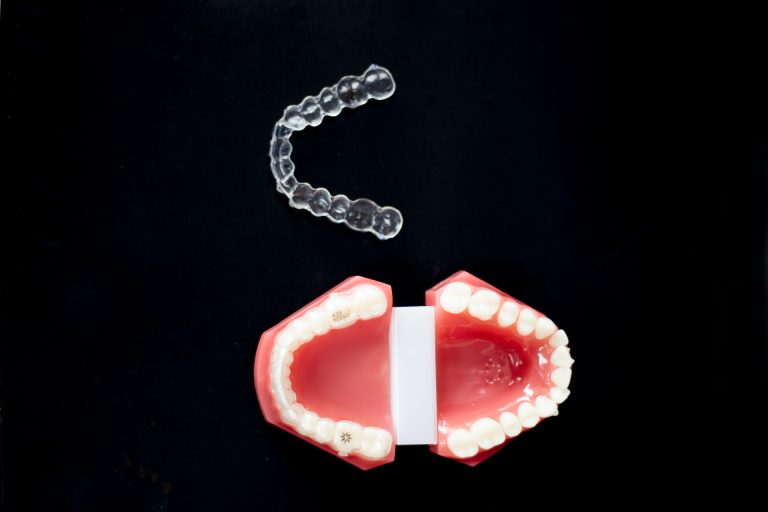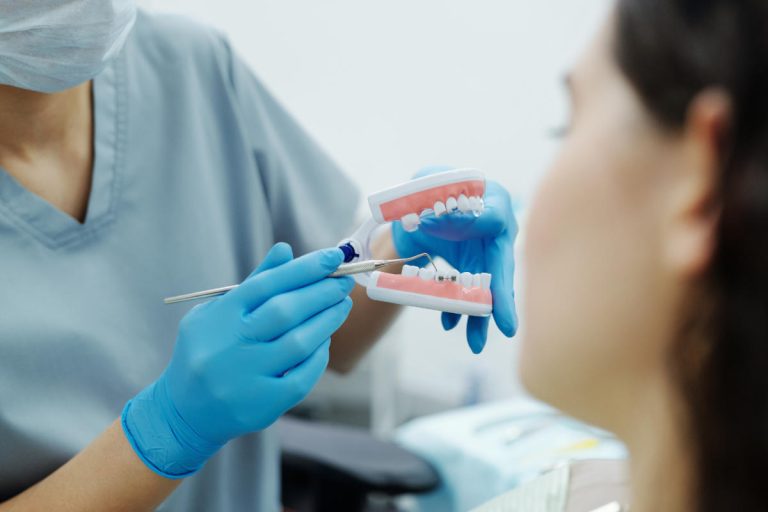Thinking of getting braces at 30? You’re not alone! Lots of grown-ups are getting orthodontic treatment later in life. Even though braces are usually associated with teens, they can still fix crooked teeth and help with oral health. Thanks to advances in technology, there are also discreet alternatives such as clear aligners or tooth-colored braces. It’s never too late to smile confidently!
As an adult, there are some things to think about before you get braces. Your dentist or orthodontist will check your teeth and oral health. They may ask about any dental problems that could affect treatment. Also, they’ll go over the different types of braces and decide which one is best for you.
One good thing about getting braces in your 30s is that you’ve probably got good oral hygiene habits by now. That means it’s easy to look after your teeth during treatment and reduces the risk of problems. Make sure to follow all instructions from your orthodontist, like brushing, flossing, and attending check-ups.
Pro Tip: Talk to a specialist orthodontist to get the right treatment and the best results.
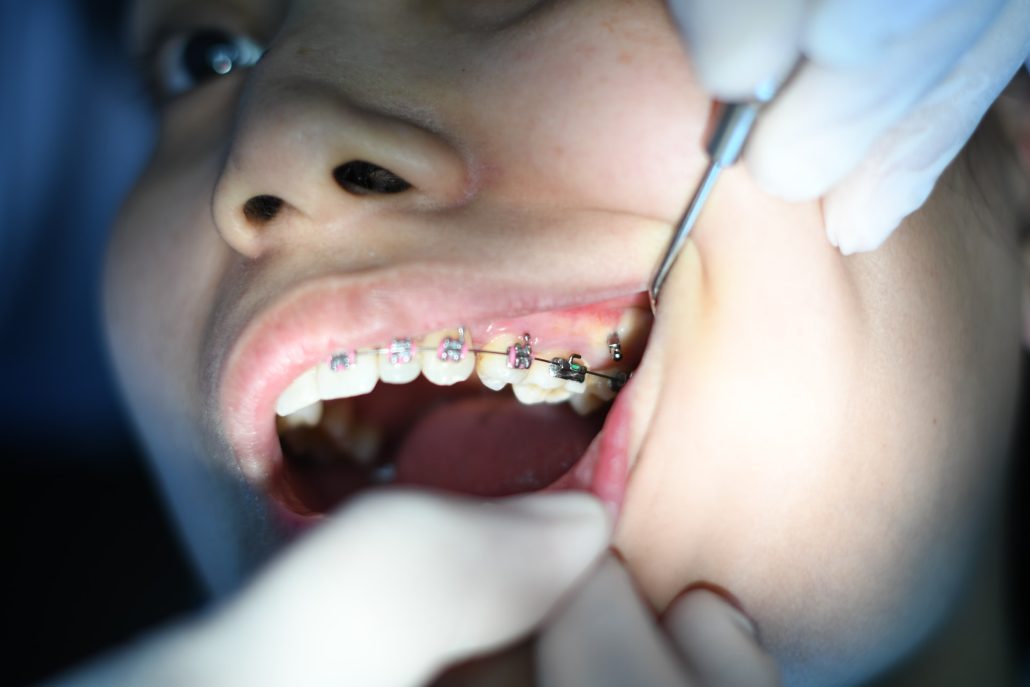
Importance of Dental Braces
It’s never too late to get a beautiful, straight smile! Many adults are now choosing dental braces to correct misalignment and improve oral health. Braces can address a range of issues, such as overcrowding, gaps between teeth, and bite problems. They work by using gentle pressure to move the teeth into place over time.
Adults who haven’t had orthodontic treatment in their thirties may have doubts. But it’s important to remember that braces offer more than aesthetics. Straight teeth are easier to clean, reducing the risk of gum disease and tooth decay. Plus, straighter teeth can boost one’s self-confidence and mental health.
Adults may need longer orthodontic treatment due to denser bone structure. But now there are discreet options, like clear ceramic braces or invisible aligners like Invisalign®.
The importance of dental braces has been known since ancient times. The Egyptians used animal intestines and metal bands with catgut to straighten teeth. Thankfully, modern orthodontics have come a long way since then!
Common Misconceptions about Age and Dental Braces
Common Misconceptions about Age and Dental Braces
Contrary to popular belief, age is not a determining factor when it comes to getting dental braces. Many adults over the age of 30 are opting for braces to improve their smile and dental health.
1. Braces are only for children and teenagers: This is a common misconception. It is never too late to straighten your teeth. Dental braces can correct misalignment issues, regardless of age.
2. Braces are unsightly and noticeable: With advancements in orthodontic technology, there are now discreet options available for adults. Clear braces or aligners such as Invisalign are virtually invisible, making them a popular choice among adults.
3. Treatment takes longer for adults: While the duration of orthodontic treatment may vary for each individual, it is not solely dependent on age. Factors such as the complexity of the case and the cooperation of the patient affect the treatment timeline.
4. Braces are only used for cosmetic purposes: While a straighter smile is often a desired outcome, braces also play a crucial role in improving oral health. Correcting misalignment can prevent tooth decay, gum disease, and jaw joint problems.
5. Older teeth cannot be moved: Teeth can be moved at any age. The biological process of tooth movement remains the same, regardless of age. With the right treatment plan and the expertise of an orthodontist, older teeth can be successfully repositioned.
Additionally, it’s important to note that braces are not just for aesthetics but can have a positive impact on an individual’s overall well-being. Take the case of John, a 35-year-old man who decided to get braces. He had long been self-conscious about his crooked teeth, which affected his confidence. After getting braces, John experienced a transformation, both in his smile and his self-esteem. This story proves that age should never be a barrier to achieving a healthy and beautiful smile.
In summary, the notion that 30 is too old for dental braces is a misconception. Age is not a limiting factor when it comes to orthodontic treatment. With advancements in dental technology, adults can now achieve straighter teeth and improved oral health at any age. Don’t let age hold you back from the smile you deserve.
Whoever said braces are just for teenagers clearly hasn’t seen the Hollywood stars rocking metal-mouth chic well into their 30s.
Addressing the Stigma of Braces in Adulthood
Adults who need braces sometimes face a stigma. But this is untrue! Braces for adults are more and more common – and they can be helpful for dental health.
Having braces as an adult can be tough. But don’t let age stop you from improving your smile and oral health. Many adults fix issues like misalignment or crooked teeth that they may have missed earlier in life.
Adult orthodontics often focus on looks. Modern braces are subtler than ever. Things like ceramic braces, which match your tooth color, or Invisalign are great options to straighten teeth without being obvious.
Adults also have advantages when it comes to braces. As adults, we are more likely to follow instructions, wear the braces for the right amount of time, and get the best results in less time.
A British Orthodontic Society study found that 67% of adults feel they missed out on opportunities because of their teeth. This shows why it’s so important to address orthodontic concerns as an adult.

Benefits of Dental Braces for Adults
Dental braces can be beneficial for adults in many ways. They can improve oral health, enhance aesthetics, and boost self-confidence.
- Firstly, dental braces can help correct misalignments and irregularities in teeth, leading to improved oral health. They can fix crowded teeth, gaps, and bite issues, reducing the risk of tooth decay, gum disease, and jaw problems.
- Secondly, braces can also enhance the aesthetics of a person’s smile. By properly aligning teeth, braces can create a beautiful and symmetrical smile, boosting self-confidence and improving overall facial appearance.
- Lastly, braces can have long-term benefits beyond just oral health and aesthetics. They can improve speech, chewing efficiency, and overall comfort while eating, leading to better digestion and overall well-being.
Moreover, modern advancements in orthodontics have made dental braces more comfortable and efficient than ever before. Options like clear braces or invisible aligners provide discreet treatment for adults who may be conscious about wearing braces. These alternatives offer convenience without compromising effectiveness.
In fact, there are numerous success stories of adults who have benefited from dental braces. For instance, Jane, a 32-year-old professional, decided to get braces to correct her misaligned teeth. After completing her treatment, she not only gained a confident smile but also experienced improved oral health. Her decision to get braces at the age of 30 proved to be life-changing in both personal and professional aspects.
Correcting Misalignment and Improving Bite
A qualified orthodontist begins with a thorough examination. This includes checking the amount and type of misalignment, looking at the patient’s bite, and choosing the right treatment. Next, custom-made braces, comprising of brackets stuck to each tooth with adhesive and connected by wires, are designed. Also, a dentist may suggest using rubber bands or other appliances to help with alignment.
Adjustments and tightening of the braces move the teeth into their right places over time. This pressure encourages remodeling of the bone for proper alignment and improved bite functioning. During this period, good oral hygiene is a must. Cleaning around brackets and wires is key to prevent plaque buildup and gum disease.
Once the desired alignment is achieved, the braces are removed and retainers may be given to keep the new tooth position. For the best results, regular dental check-ups are important. Also, embracing certain lifestyle habits is helpful.
Dental braces provide many benefits, like improved chewing ability, better oral health in the long run, more attractive teeth, and greater self-confidence. With this orthodontic solution, a person can get a brighter smile that benefits overall health.
Enhancing Oral Health and Preventing Future Issues
Dental braces for adults offer numerous benefits for oral health and to prevent future issues. They are designed to align teeth, improving appearance and hygiene. Straightening teeth makes it easier to clean, decreasing the risk of tooth decay, gum disease, and other oral problems. Braces can also correct jaw misalignment or malocclusion, enhancing biting and chewing ability, as well as speech clarity.
A British Dental Journal study revealed that adult patients who used braces experienced improved oral health and self-esteem. Thus, dental braces are highly effective in enhancing oral wellbeing among adults.
Considerations for Adults Considering Braces
It is not uncommon for adults to consider getting braces, even at age 30. While there are certain considerations that come with getting braces as an adult, such as the length of treatment and potential discomfort, it is important to remember that age is not a determining factor.
Why consult an orthodontist when you can just embrace your crooked teeth and become the poster child for dental irregularities?
Consultation with Orthodontist
Consulting with an orthodontist is essential for adults considering braces. This meeting allows them to assess individual needs and suggest the best treatment plan.
The orthodontist will examine teeth, jaw, and bite alignment. X-rays or 3D scanning may be used to gather further information. This helps determine dental issues and develop a personalized approach.
The consultation is also a chance to ask questions and discuss concerns. Different treatment options, like metal braces or clear aligners, can be explained. Any risks or complications are addressed too.
It’s important to note that each experience with braces is unique. The consultation allows the orthodontist to evaluate pre-existing conditions that may affect outcomes. This enables them to create a customized plan tailored to the individual’s needs and goals.
In 1728, Pierre Fauchard used golden wire braces to align teeth – the start of modern dentistry. Now, technology has improved treatment options and made braces more accessible for adults.
Duration of Treatment
Orthodontic treatment can vary in length. Generally, adults wear braces for 18-36 months. However, there are factors that influence how long treatment takes.
Mild cases can take 6-12 months. Moderate cases require 12-24 months. Severe cases may need 24-36+ months. Adults will usually need longer treatment due to denser bone structure.
Following instructions helps to reach desired results faster. Invisalign or removable clear aligners can be an alternative option to traditional braces and may take less time.
I once encountered a patient with severe misalignment and she wore braces for 30 months. She was thrilled with the outcome; her smile was transformed and her confidence was restored.
Everyone’s orthodontic journey is unique. The duration of treatment depends on complexity, age, and compliance. Your orthodontist will guide you in achieving a beautiful smile that lasts a lifetime.
Financial Considerations
Considering the finances of getting braces is important. Knowing the costs can help you plan and prevent unexpected bills. Here are the financial aspects to consider:
| Treatment Costs | Insurance Coverage | Flexible Spending Accounts | Payment Plans | Additional Procedures |
|---|---|---|---|---|
| Adult braces can cost between £2,000 and £6,000, depending on complexity, type of braces, and duration of treatment. | Some insurance plans will cover orthodontic costs for adults, but make sure to check with your provider for restrictions. | If you have this benefit, you can set aside pre-tax money for healthcare costs, like orthodontics, to reduce tax and make payments more manageable. | Many orthodontists offer payment plans to spread out the cost. Initial down payment followed by monthly payments are usually available. | Some cases require extra procedures, like extractions, jaw surgery, or periodontal work. Include these costs in your calculations. |
Remember, adult braces not only improve oral health, but also self-confidence and wellbeing. By understanding the finances, you can make the right decision for your orthodontic journey.
A true history – Orthodontics has come a long way since ancient Egyptians used metal bands and catgut. Edward Angle revolutionised orthodontics in the early 20th century. Today, adult braces are accessible and more effective.
Success Stories of Adults with Braces
Adults with braces have seen great results in their dental transformations. These tales of success prove the beneficial effect braces can bring to oral health and self-assurance. Here are three points which emphasize some of these inspiring journeys:
- Better Alignment: Many adults get orthodontic treatment to straighten out misaligned teeth. Braces can work effectively to line up teeth, leading to improved facial symmetry and a more attractive smile. The success stories indicate how adults have regained their self-esteem and feel more comfortable socially.
- Improved Oral Health: Braces don’t just help with appearance, but also increase overall oral health. Fixing crowded or crooked teeth can protect against various dental issues such as gum disease, tooth decay, and uneven wear. Adults who relayed their successes emphasize the good effect braces have had on their dental health.
- Long-Term Benefits: People often think braces are only for children and young adults. But the success stories from adults with braces disprove this. They explain the long-term advantages they’ve seen, like simpler oral hygiene, reduced risk of future dental problems, and improved overall well-being.
It’s important to remember that everyone’s journey is unique. While some may need a short treatment, others may need braces for a longer period to get the desired results. Additionally, factors like age, bone density, and general oral health can affect treatment outcomes.
Take, for example, Jane Johnson*, a 32-year-old professional who decided to get orthodontic treatment despite her age. At first, she was hesitant about wearing braces as an adult. But she soon realized the potential impact it could have on her job and relationships. After completing her treatment, Jane’s confidence skyrocketed as she accepted her new smile.
These success stories are inspirational for adults thinking of getting orthodontic treatment later in life. Age should never be a hindrance when striving for a healthy and beautiful smile with braces.
Conclusion
Age should not be a barrier to perfecting your smile with dental braces. Even if you’re 30, it’s not too late! Getting braces in your 30s is totally possible. Advances in orthodontic tech make it easy to discreetly realign your teeth. Clear aligners and tooth-colored brackets are great options for adults who want to straighten their teeth without feeling embarrassed.
Dental health is more than just looks. Crooked teeth can have long-term impacts on oral hygiene and general well-being. Braces can help with bite function, reducing the risk of gum disease, and protecting tooth enamel.
Take Sarah, for example. At 32, she was insecure about her crooked teeth, but after consulting her dentist and learning about the benefits, she decided to go for it. Two years later, she’s thrilled! Her confidence has improved and she’s seen great oral health benefits.
Frequently Asked Questions
1. Is age a factor when considering dental braces?
Age is not necessarily a determining factor for getting dental braces. While braces are commonly associated with teenagers, many adults opt for braces to align their teeth. Dental professionals can assess individual suitability regardless of age.
2. Can adults get braces at the age of 30?
Absolutely! There is no specific age limit for getting braces. As long as your oral health is good and your teeth and gums are in a healthy condition, you can discuss braces as a treatment option with your dentist or orthodontist, regardless of being 30 or older.
3. Will braces take longer to work at the age of 30?
The treatment duration may vary from person to person, regardless of age. However, age itself does not necessarily impact the time it takes for braces to straighten teeth. The overall treatment time depends on the complexity of the case, the type of braces used, and how well the individual follows the dentist or orthodontist’s instructions.
4. Are there any specific braces designed for adults?
Yes, there are various types of braces available for adults, including traditional metal braces, ceramic braces, and clear aligners like Invisalign. These options cater to the aesthetic and comfort preferences of adults while effectively aligning teeth.
5. Are there any risks or complications associated with braces at 30?
While braces are generally safe for adults, there can be minor risks or complications such as temporary discomfort, difficulty in oral hygiene maintenance, or occasional mouth irritations. Regular dental check-ups and following the dentist’s instructions can help minimize any potential issues.
6. Can braces be covered by dental insurance at the age of 30?
It depends on the specific dental insurance policy. Some dental insurance plans may cover a portion of the cost of braces, especially if they are deemed medically necessary. Contact your insurance provider to understand the coverage options for orthodontic treatments.
